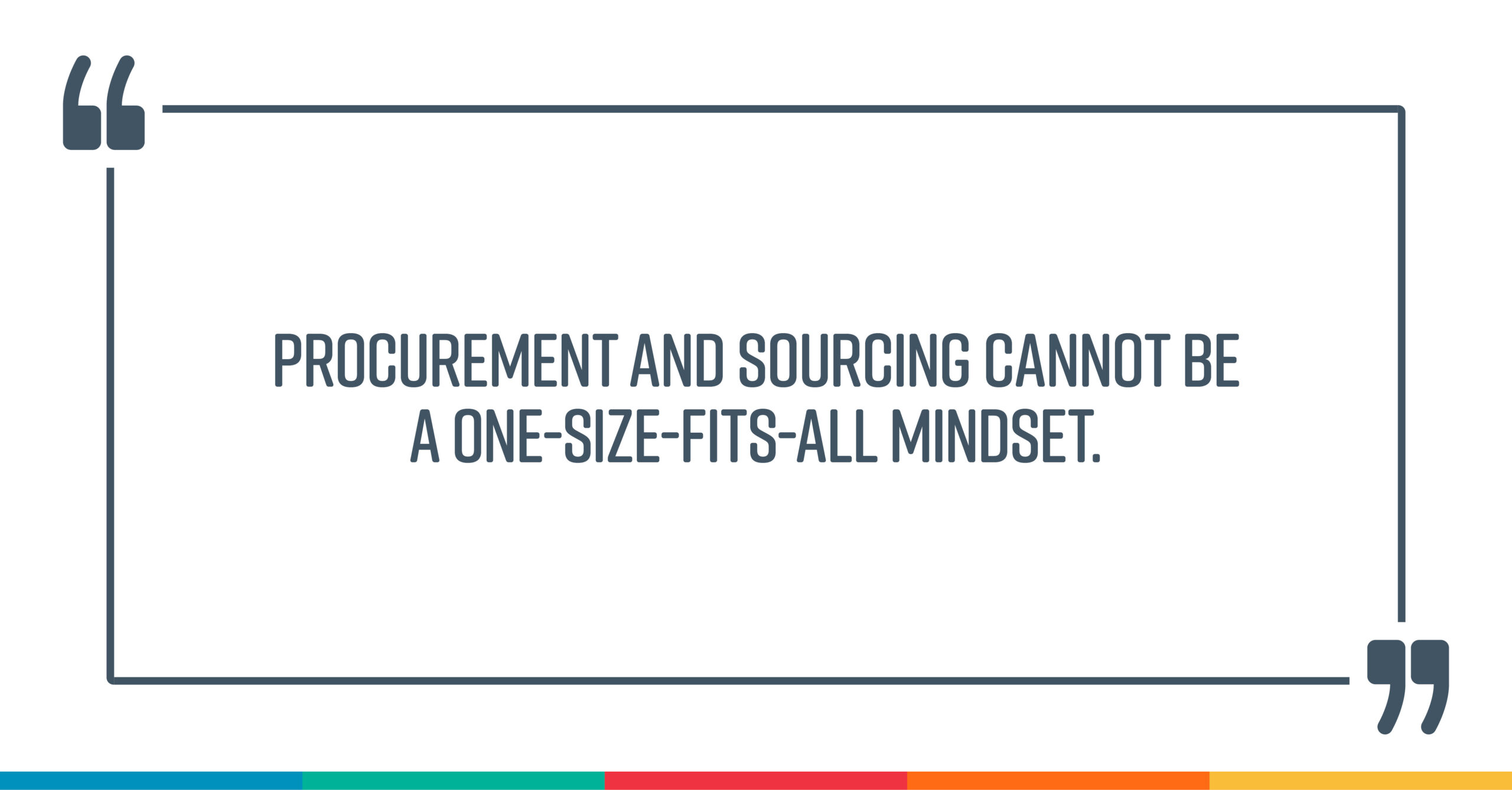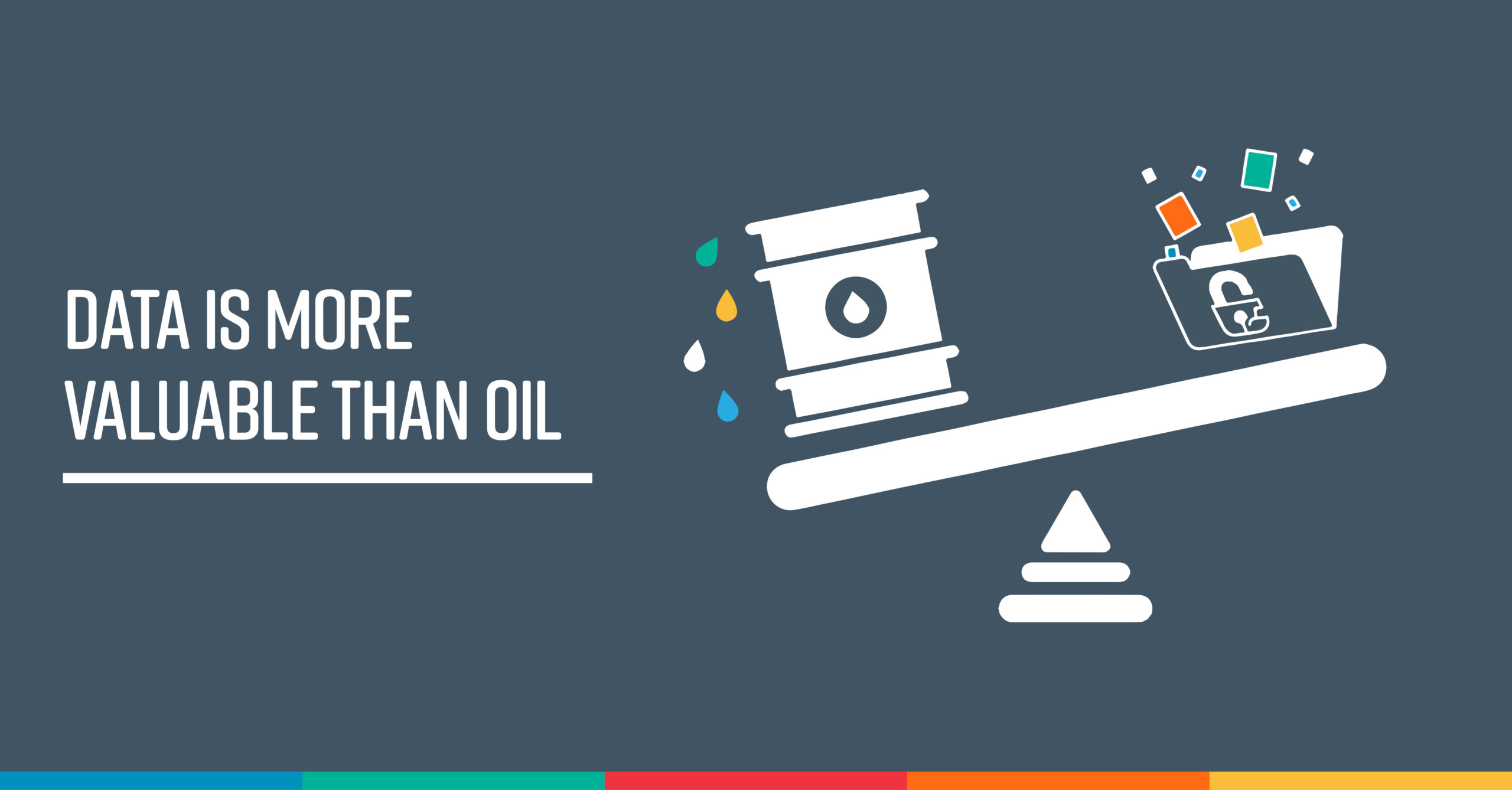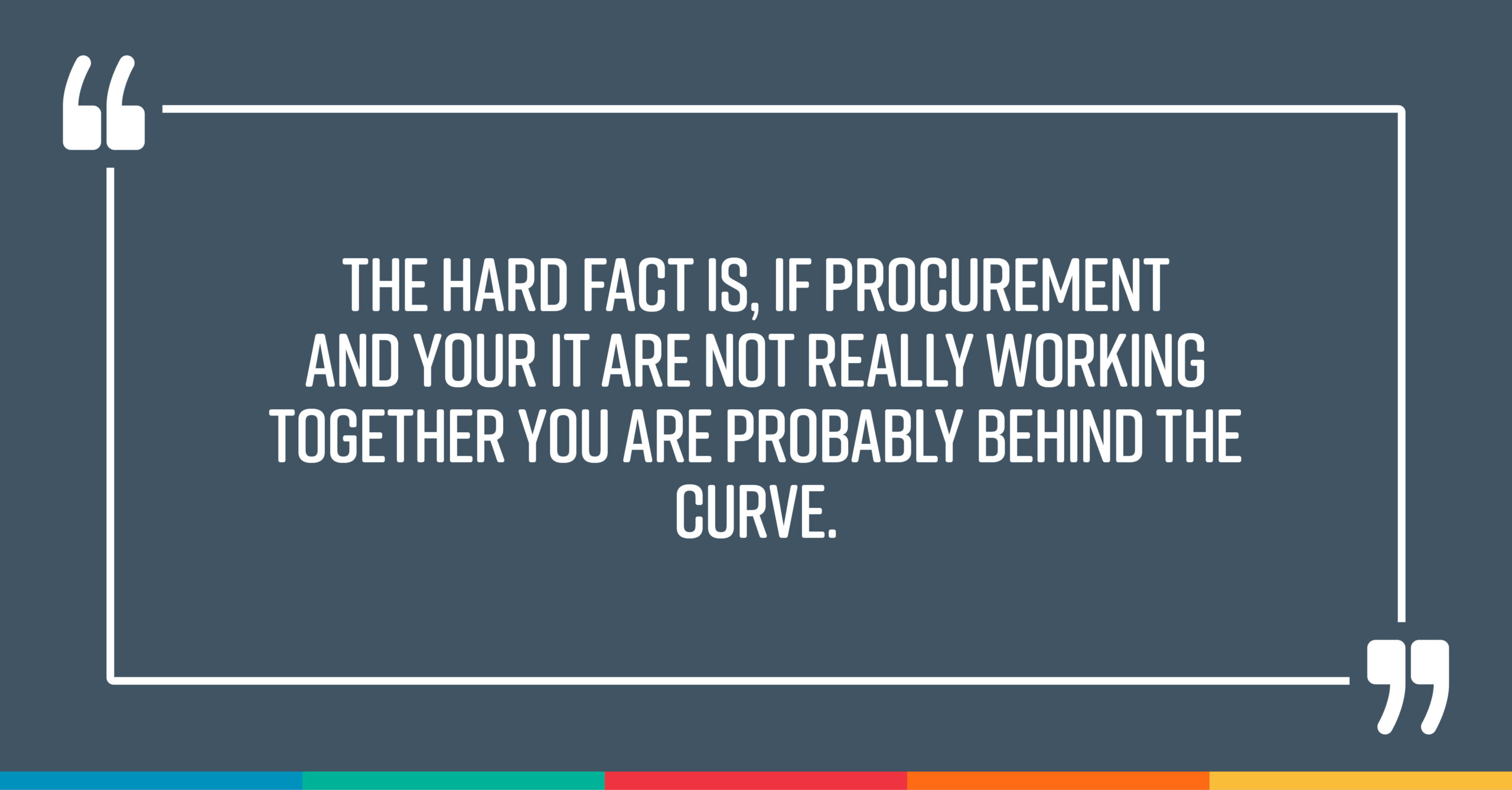Kris Lance is a senior director with the group purchasing company Una. He’s an experienced leader with a proven history of success across multiple industries, especially in healthcare and IT procurement. Kris describes himself as a “seeker of truth”, and here he takes a look at the tech landscape in procurement – and in particular, data.
We asked:
“As the availability of more sophisticated technology is matched by the opportunity to acquire increased levels of data, the temptation to run headlong into this shiny digital future is highly seductive – but should we?”
There is More at Stake Than Cost Saving
Let me lay out one crucial truth at the outset – procurement and sourcing cannot be a one-size-fits-all mindset. So, as IT continues to explode in scope and complexity, it is crucial to search for synergies across specific platforms or individual pieces of tech that integrate to provide the specific solution you are looking for.

A buzzword that I hear with increasing frequency is – “automation”. Does this mean taking the exact same steps in an existing process but, rather than having an individual do them, having a machine do them? If it does, then what’s important is who’s managing that machine? Who’s watching those settings? Could we be in danger of continuing to make the same mistakes only faster and cheaper?
When it comes to buying data and digital solutions, the best approach to take is the same you’d use for basic change management. As recent global events have taught us, price is no longer the ultimate goal, there are now additional components that outweigh simple cost savings.
Don’t Confuse Movement with Progress
We need to take a step back and look at what is really happening. At times it may seem that we’re making progress, but we must be careful not to confuse movement with progress. We can only truly be making progress if we are moving down a planned path toward an identified, desired and specified destination.
So, I think that, before we look at automation or digitization, we really need to look at the process and how we’re going to be executing and capitalizing on the benefits it can deliver. There is a panoply of digital solutions out there – a veritable smorgasbord of shiny tech adds swathes of capability. Should you get some? The answer is – probably.
But first you need a timeout. Hit pause and work out how you are going to bridge the gap between IT and Procurement. Start by deciding, then defining what good looks like for the business. Then create a roadmap and lay out the steps that need to be taken.
One Vision
The starting point must be achieving alignment. This means ensuring that everyone in the team has the same picture in their head of what “good” looks like in as much detail as they need. Next, is an understanding of the route map of how to get to “good” and, specifically, what each of the key players need to know and do. Then you can overlay the “how” and work out a timeline. This has to start at the top and cascade down.
IT and Procurement are different functions and there is nothing wrong with that, provided there is a smoothly functioning two-way exchange between the two – a bridge if you like. Everyone needs to be aligned with a clear and common picture of what success looks like for the organization and their role within it.
Your Data Can Tell You What Should Happen Next
The saying goes “data is more valuable than oil” and I’d agree – even at today’s price per barrel!

That said, to realize this value you have to distil the relevant knowledge and insights from your raw data. To do this effectively you must be ruthlessly objective, divorcing yourself from all bias and preconceptions. In short, you’ve got to let the data speak for itself. And, when you get really good at listening, your data can tell you what should happen next.
We are all on a data strategy journey and some of us are further down the road than others. Like most things, it is vital to get a good start, so let’s look at that. Many CPOs are facing an ocean of inputs and saying “OK, so I have all this data – what should I do with it?”
Should you invest in a software platform that can help aggregate data sources then show you, visually, what it is telling you? Or should you outsource this? Either way, it is essential to remain open to the fact that everything you’ve been doing up to this point could, potentially, be wrong.
Start at a high level and progressively drill down. Once you have an understanding of your data it will inform increasingly better business decisions.
Bigger Isn’t Always Better
For some time now there has been a lot of buzz about Big Data, however I would argue it’s actually what is revealed by the more relevant and useable, “smaller data” that drives improved decision making. So I‘d suggest you start at a very high level then progressively break your data into subdivisions. Use what you learn to steer you into the specifics that will, in turn, reveal further information and actionable insights.
Get Specialist Help
So, unless you already have them within your IT team, I’d recommend you pull in experts. Invest time to help them really understand your business – what you have, where you are going and what you need to help you get there. Getting some smart and informed help will certainly point you in the right direction and ensure you get off to that all important good start.
Bridge the Gap Between IT and Procurement
Tech stakeholders can typically be a little like doctors in the tech space. They are experts (well they certainly know more than you right?) and, to get where you need to go, you really need to have them on board.
The hard fact is, if Procurement and your IT are not really working together you are probably behind the curve.

Start bridging the gap between IT and Procurement by clearly defining what success looks like for the organization (use the same process for achieving alignment as I outlined earlier).
The best way to look at it is that IT and Procurement are empowering one another, and work through any surface issues of control, autonomy and decision-making authority with the CPO and the CTO, essentially leading by example. In fact, I would say that tech and Procurement need to become best friends.
When you have your Chief Technology Officer and your Chief Procurement Officer on the same page, it will permeate downstream then on throughout the company.
What Should Be Keeping You Awake At Night?
That would probably be security and the cloud – it certainly is for me.
These can represent massive areas of spend right now and I can promise you this will only grow. So, if you haven’t already nailed your approach to these key areas, you may be setting yourself up for long-term failure.
I am not suggesting you wander into IT and announce “We are changing our cloud strategy” as they will probably laugh and go back to typing whatever email they were working on. I would however recommend you adopt the alignment approach to build and earn their buy-in.
I selected these two areas not just because of the level of investment they consume, but because of how volatile and how dangerous not paying attention to these categories could potentially be.
And Finally
Let me leave you with this thought. I have already said that tech and Procurement need to become best friends – so even if you have to smile and fake it ’til you make it in the beginning, you must at the very least begin those conversations.

